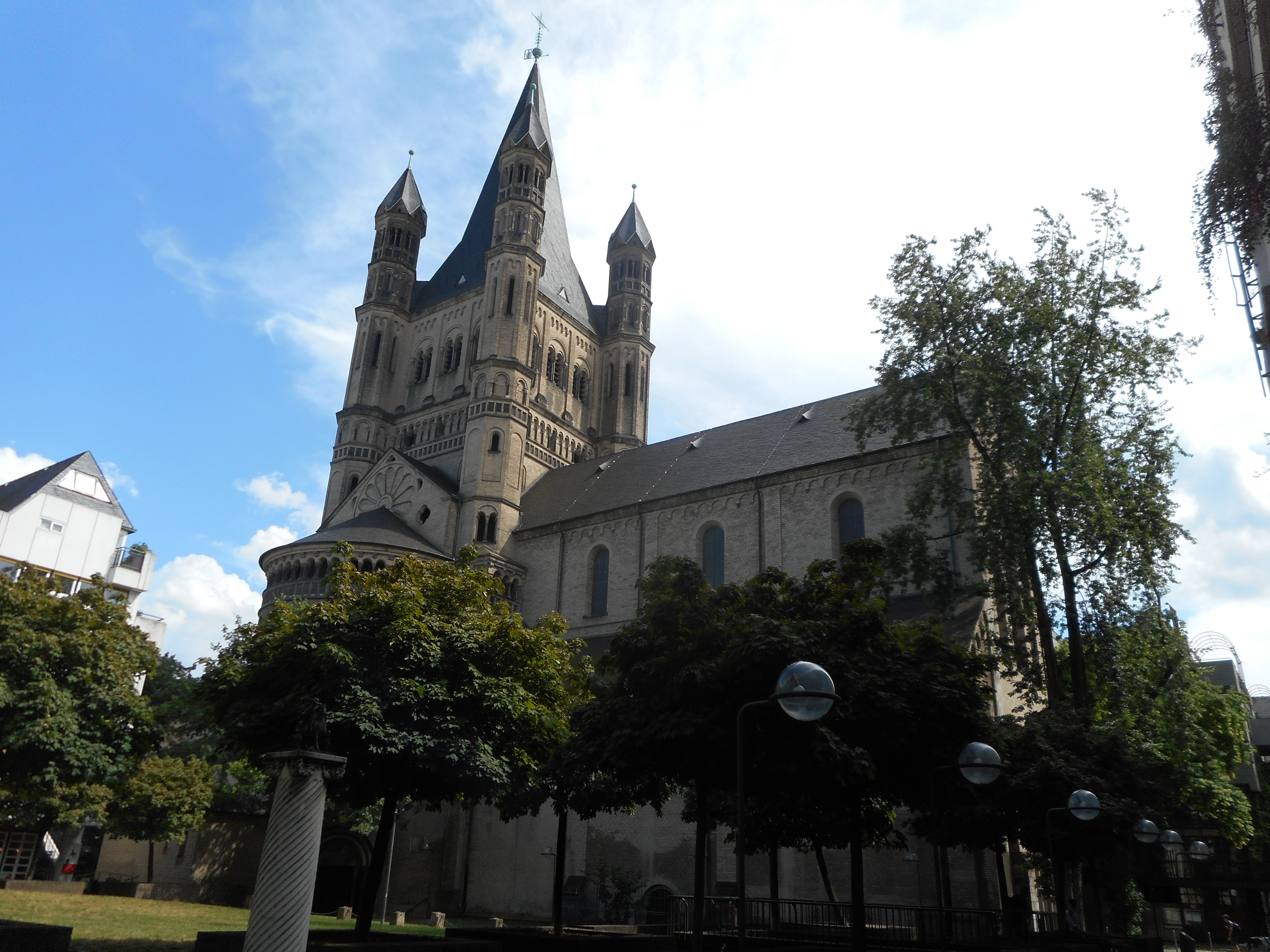En allemand Groß St. Martin (Grand-Saint-Martin, Saint-Martin-la-Grande ou Saint-Martin-Majeure), l’église Saint-Martin de Cologne est bâtie sur des vestiges romains (que l’on peut voir dans la crypte). Construite entre 1150 et 1220, c’est une basilique qui a un plan à trois vaisseaux, un chevet à trois chapelles absidioles et un clocher massif flanqué de quatre tours. Elle a servi jusqu’au XIXe siècle d’abbatiale à une abbaye bénédictine, puis elle est devenue une église paroissiale. Fortement endommagée par les bombardements durant la Seconde Guerre mondiale, la restauration du clocher se termine en 1965 et du reste de l’édifice en 1985. Une des cinq cloches s’appelle Martin.
Son appendice de Groß « la Grande », permet de la distinguer de l’église « Klein » St. Martin, Saint-Martin-Mineure, dont il ne reste qu’une tour.
La place « An Groß St. Martin », qui longe l’église, a une statue figurant une charité de saint Martin qui surmonte une colonne. Saint Martin est à cheval, en armure, et est en train de couper son manteau avec son épée. Le mendiant est représenté assis par-terre, nu et squelettique.

In German Groß St. Martin (Great St. Martin, St. Martin the Great or St. Martin Major), the church of St. Martin in Cologne is built on Roman remains (which can be seen in the crypt). Built between 1150 and 1220, it is a basilica with a three-vessel plan, a chevet with three apsidal chapels and a massive bell tower flanked by four towers. Until the 19th century, it served as the abbey church of a Benedictine abbey, and then became a parish church. Heavily damaged by bombing during the Second World War, the restoration of the bell tower was completed in 1965 and the rest of the building in 1985. One of the five bells is called Martin.
Its appendage of Groß « the Great » distinguishes it from the « Klein » St. Martin church, St. Martin Minor, of which only a tower remains.
The square « An Groß St. Martin », which runs alongside the church, has a statue of St. Martin’s charity on a column. St. Martin is on horseback, in armour, and is cutting his cloak with his sword. The beggar is shown sitting on the ground, naked and skeletal.

 "/>
"/>